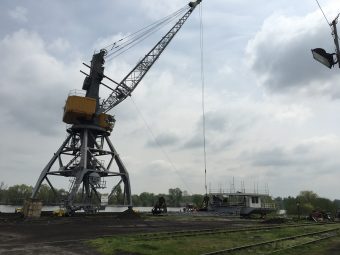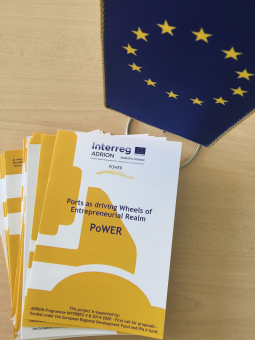
After World War II, ports in the mentioned region along with the river ports along the Danube have lost their past roles as dynamic marketplaces and cultural centres. Also, the new challenges presented by improvements in communication and technology have left ports outdated and without the chance to perform at their full potential. In Serbia, through which the Danube flows 558 kilometres, there are excellent conditions for water transport, a way of transporting goods which has been neglected. However, the fact that European foundations have invested funds in revitalizing revitalize these harbours is encouraging, and there are also targeted EU programs, along with international Adriatic-Ionian regional initiatives, like the “Ports as Driving Wheels of Entrepreneurial Realm – PoWER”.
PoWER is an initiative which has its complete methodology based on the idea which was submitted by the European Parliamentary Research Service (EPRS), which was first adapted for use in the maritime sectors and port areas. The project aims to re-evaluate the condition and situation of the Adriatic-Ionian ports and restore the historical roles that these places once held as development and exchangecentres but adapting to modern-day challenges and requirements.
Ports are very complex systems. In comparison to other transport infrastructures, ports are more harmful to the environment and as such, face high maintenance costs with the need for continuous investment and development toward the less environmentally harmful operation. Making ports more efficient can be achieved in a few sometimes simple, other times rather costly steps.
In focus:
For instance, to lower harmful vehicular emissions, trucks could be turned off when unloading goods. In the case of ships, this is a bit different since, sadly, turning them off is not an option. Repairing roadways to make terrestrial shipping easier in the port area may also improve efficiency, with acceptable costs. However, if the seabed or river bed is polluted, cleaning requires much higher costs and additional human resource engagement followed by long-term investment plans. It’s clear to see that each type of port infrastructure intervention comes with high costs. Still, they are necessary since, with time, the entire infrastructure deteriorates, and maintenance and intervention costs increase proportionally. Due to this infrastructural deterioration, the economic value of port areas is diminished, thus creating a vicious circle.

In response to the challenges that ports face in their day-to-day operations, the PoWER project was created to test and develop a methodology for driving innovation in port areas in response to currently identified needs. The project supports the development of ports and changing them into Innovation Hubs, or other centres where innovation is cultivated. This process brings together many stakeholders who are involved in the ports’ “supply chain”, and as such, requires enhanced cooperation on both local and international level to achieve both vertical and horiontal objectives of the proposed innovations. The project is currently being implemented in 6 pilot ports (Bari, Brcko, Drac, Igoumenitsa, Ravenna and Rijeka) with the main objective to improve their energy efficiency.
The results of the project will be visible upon completion when the activities and strategies proposed by the local decision-makers during the project are expected to be implemented. The backbone of the project finding a solution to the problem of insufficient energy efficiency that most ports of the Adriatic-Ionian region are facing and the ultimate goal of the initiative is to offer a methodology for solving this burning problem.
The PoWER project was supported as a part of the First Call for Proposals of the ADRION Interreg V-B Transnational Program, funded by the European Regional Development Fund and the Instrument for Pre-Accession Assistance, the so-called IPA II.
Prepared by: The PoWER project team from the “European Affairs Fund” APV
This article was published in the new issue of Energy portal Magazine GRINNOVATIONS, December 2019 – February 2020.



